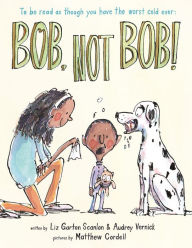Children's Writer's World warmly welcomes a guest blog by Melody Delgado.
Creating a world for your novel can be based upon research,
creative thinking, or both. Whether your novel is set in the past or the
present day, while the setting doesn’t need to overshadow the basic story, it
serves as the backdrop of the story and it needs to be realistic and
believable.
 When writing historical
fiction, in order to form a world that seems real, research is essential. For
my recently released YA historical romance, ROYALLY ENTITLED, which takes
place in the year 1630, I spent two months researching this time period and
seeking clues as to what was happening in Europe at the time. Some of the books
I poured over at the library were 700 pages long. These books included
information about clothing of the Renaissance period, ordinary occupations,
common food items, inventions of the time, and popular traditions.
When writing historical
fiction, in order to form a world that seems real, research is essential. For
my recently released YA historical romance, ROYALLY ENTITLED, which takes
place in the year 1630, I spent two months researching this time period and
seeking clues as to what was happening in Europe at the time. Some of the books
I poured over at the library were 700 pages long. These books included
information about clothing of the Renaissance period, ordinary occupations,
common food items, inventions of the time, and popular traditions.
One interesting point that I found was that the rifle, or
caliver, was invented during this time period. It replaced the crossbow and was
as popular then as having a smart phone is today. I tried to find a way to
include this nugget of information, and the invention of the caliver ends up
playing a pivotal role in the story.
A custom of the time that was interesting and surprising
was that sometimes royals united themselves in marriage with other royals
they’d never even met. A miniature portrait would be sent to a potential suitor
and they would decide whether to meet or even wed the person based merely on
this small portrait. This particular morsel was too good to pass up, so this
tidbit is another key component of my story.
It took me ten months to write the initial skeleton of the
story, for a total of one year from the germ of an idea to a completed draft.
Once I finished the draft I realized that the story couldn’t possibly take
place in an already existing country. I’d strayed away from too many details
and true historical events. The solution was to invent my own country called
the nation of Brevalia.
It was freeing to not have to hold to the physical
description and landscape of a specific country, but to be able to come up with
things from my own imagination and experience. Currently, I live in a locale
with a river that takes up a large portion of the city and helps to define it.
I’d lived in another city with the same river feature, so I knew I wanted to
include a river in my story. But I may not have been able to do that if I’d had
to stick to the description of a specific European location.
However, many writers choose to write about a part of
history as it actually happened and may even include actual historical
characters. This method couldn’t work for my story, but whichever road you
choose for your historical novel, research is essential in creating a
believable fictional world.
Even if you are writing in the present day, which will be
the world for my upcoming middle grade novel, OOPS A DAISY, there still need to
be specific enough details to ground the reader in the setting of the story. My
story takes place in modern day Miami, so the cultural aspects needed to be
represented, as well as the favorite pastimes of the people in the city and the actual
locations and landmarks found in the area. On the other hand, I did fashion a
fictional school for my story to take place in. But details are based on what
I’ve observed in modern day magnet schools and ideas I came up with on
my own.
I’ve published two picture books and even picture books
take place in a ‘world.’ As an author, we can’t leave all this ‘world-creating’
to the illustrator. The setting and tone we want to achieve must be made clear
through our characters’ words and actions.
Creating a believable fictional world may still require the
writer to be rooted in reality, but there is also plenty of room for using
one’s imagination. Let it run free, and see where it leads you.
BIO:
Melody Delgado has been a published writer since 2000. Her short stories have appeared in national
magazines such as AIM (America’s Intercultural Magazine), VISTA, and CHICKEN
SOUP FOR THE LATINO SOUL. She has
published two picture books. TEN ROARING DINOSAURS was published by Houghton Mifflin
Harcourt and DO YOU KNOW HOW I GOT MY NAME? was recently published by Little
Debbie/McKee Foods.
Her YA inspirational, historical romance, ROYALLY ENTITLED,
was released digitally by Clean Reads in May, 2017. It is the first in a
three-book series called The Brides of Brevalia. A humorous children’s novel,
OOPS-A-DAISY, is coming to print on September 5 of this year and is also the
first in a children’s series, The De La Cruz Diaries. It will also be published
by Clean Reads.





